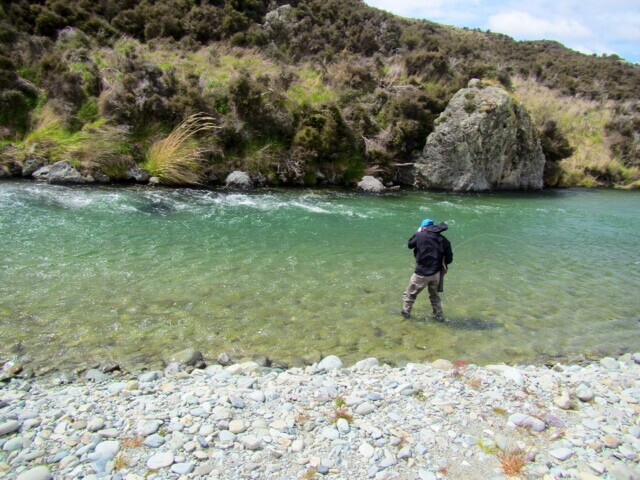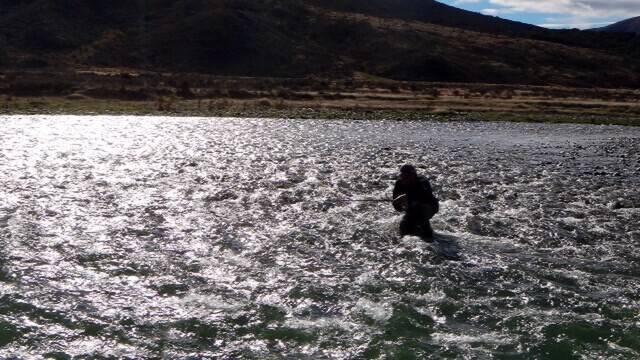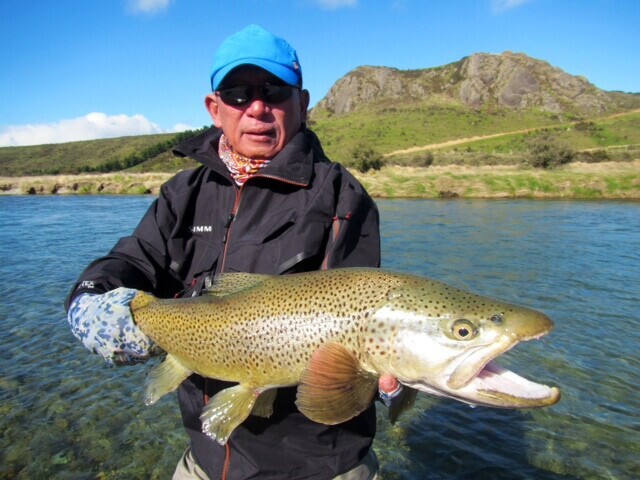So face it: if you want to fish New Zealand then its a good bet you will have to deal with wind. Strong wind. If you cant, you might not catch fish, and after flying all this way and spending all that $ a little practice and preparation beforehand doesn't sound too silly, does it. Check this...
To deal with he wind we need a fast, tight loop that straightens low to the water.
Need more? Read on...
The Mechanics
Variable casting arc.
The casting arc is the angular change of the rod butt between the backcast, and forward cast, or the V your rod butt makes throughout the casting stroke. To blast tight, efficient, aerodynamic loops your rod tip must track a straight line throughout your casting stroke. As the line gets longer or more force is applied to the stroke, the rod flexes deeper and the wider your casting arc must become to accommodate this.
So: short cast / less force = less flex = narrow casting arc = narrow V
Longer cast / more force = deeper flex = wider casting arc = wider V
Casting plane.
When dealing with the wind you don't want your line to straighten high above the water. When the energy leaves the line upon straightening, say at eye level your fly then has three or four seconds to free fall under the mercy of the wind. Less for midgets. Regardless of your physical stature, your fly wont land where it needs to...
Instead you want your line to straighten low to the water, so when all the energy leaves the line it has minimal exposure to the wind before it settles on the surface. Remembering our variable casting arc, we cant just maintain the same backcast and drop the forward cast lower: instead we simply canter our entire casting arc / plane forward and downwards. (As much as I loathe the clock-face system, instead of casting for example, 11 - 1 you will now cast 12 - 2 or similar: you get the picture) resulting in a tight, aerodynamic loop that straightens lower to the water.
Line speed.
Line speed is king when battling the wind. The are two key ways of increasing line speed: through the rod, and through the line. Smoothly and steadily accelerating into a delayed turnover of the rod is the way to increase line speed and decrease the effort required when casting into the wind. A crisp, absolute stop best transfers the rods energy through to the taper of your line. A medium aggressive or aggressive forward taper of your line and leader will also assist in turnover of your fly. Simply imagine you are dragging the rod tip in the direction of the cast as you accelerate, then rotating right at the final stages of your stroke. Like this \\/ rather than /. This can be as simple as squeezing your hand to make the cast. Keep it smooth, fast and late.
Double Haul.
Hauling directly increases line speed in addition to that generated by the rod alone. Your haul should be fast, zippy and late. Most importantly it should not alter the timing of your casting stroke: often when introducing the haul, many anglers will begin earlier with the rod hand, finish too soon with the stroke, or add in a mystery 'punch' of power which causes all sorts of funky shhhh to occur.
If you don't haul, learn to do so. If you do, then improve: Check out my detailed lockdown lesson on the double haul here
Next week we will look at the casts themselves to deal with headwinds, tailwinds on and off shoulder winds.


